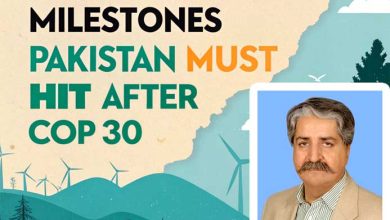Planning Minister: Water issues top COP 27
Egyptindependent, September 24, 2022
Minister of Planning and Economic Development Hala al-Saeed said the UN Climate Change Conference 2022 (COP27), to be hosted by Egypt in November, gives a top priority to water issues.
She added that Egypt coordinates with all parties to ensure equitable access to water.
Saeed’s remarks came during a speech that she delivered on Friday at the high-level round-table on the “United Nations Water Conference 2023” that was organized on the fringes of the 77th session of the United Nations General Assembly in New York, according to a statement released by the Planning Ministry.
The event was attended by the Dutch Prime Minister Mark Rutte, Tajikistan’s Minister of Foreign Affairs Sirojiddin Muhriddin and Deputy Secretary General of the United Nations Amina Mohamed.
During her speech, the minister stressed the issue of water is closely related to the three pillars of sustainable development.
She noted that if the sixth objective of the 17 Sustainable Development Goals (SDGs) is not achieved, world countries will not be able to fully implement the 2030 agenda, especially with regard to attaining food security and health coverage, combating climate change, preserving ecosystems and promoting peace.
Saeed went on to say that water is an integral part of human progress, however, human progress itself, in addition to population growth, intensified pressure on water resources, explaining that the global water crisis is becoming more complicated due to the recent multifaceted challenges, mainly the coronavirus pandemic and the crises of food and fuel.
The minister stressed that Egypt attaches great importance to the United Nations Water Conference for 2023, which will be the first United Nations conference on water since 1977, lauding the comprehensive approach and the consultative process executed by the Netherlands and Tajikistan, co-hosts of the United Nations Water Conference 2023, in cooperation with the United Nations Secretariat.
She stated that Egypt was at the forefront of the countries that launched the trans-regional statement on water, which was signed by 168 countries and 11 organizations in 2021.
The minister explained that the focus should be placed on accelerating the achievement of all water-related goals stated in the 2030 Agenda, especially the goal 6 of the 17 Sustainable Development Goals, stressing that water scarcity still constitutes a complex challenge, particularly in Africa and the Middle East.
She also underlined the necessity of protecting the human right to water, with giving special attention to the most vulnerable groups living in water scarcity countries.
Saeed emphasized the need to apply the best available science and knowledge and share good practices, pointing to the adoption of Egypt’s Vision 2030 and the National Water Resources Plan (2017-2037) as a water policy that combines the effective use of renewable water resources and the increasing dependence on non-conventional water sources.
At the conclusion of her speech, the minister indicated that climate risks related to water affect billions of people around the world, affirming that this year represents an exceptional opportunity to strengthen the links between water and climate agendas, through the COP27 and the UN 2023 Water Conference.
She said Egypt will seek during its presidency of the COP27 to enhance cooperation and interconnectivity between water and climate action to achieve the 2030 Agenda, especially the objective 6 of the Sustainable Development Goals, in addition to initiating the action plan of the UN Secretary General’s initiative on the universal coverage of early warning systems.







